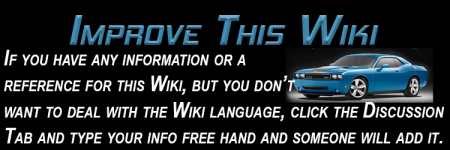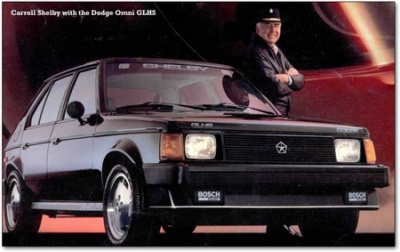Difference between revisions of "Coach Builder"
Old Hippie (talk | contribs) |
Old Hippie (talk | contribs) |
||
| Line 11: | Line 11: | ||
{{Template:Underconstruction}} <!-- Remove this line after the wiki is 80% completed --> | {{Template:Underconstruction}} <!-- Remove this line after the wiki is 80% completed --> | ||
| − | A coachbuilder, or body-maker, manufactures bodies for passenger-carrying vehicles.[note 1] Coachwork is the body of an automobile, bus, horse-drawn carriage, or railroad passenger car (known formally as a railway carriage). The word "coach" was derived from the Hungarian town of Kocs. | + | A coachbuilder, or body-maker, manufactures bodies for passenger-carrying vehicles.[note 1] Coachwork is the body of an automobile, bus, horse-drawn carriage, or railroad passenger car (known formally as a railway carriage). The word "coach" was derived from the Hungarian town of Kocs. |
| + | |||
| + | Custom or bespoke coachbuilt bodies were made and fitted to another manufacturer's rolling chassis by the craftsmen who had previously built bodies for horse-drawn carriages and coaches. Separate coachbuilt bodies became obsolete when vehicle manufacturers found they could no longer meet their customers' demands by relying on a simple separate chassis (on which a custom or bespoke body could be built) mounted on leaf springs on beam axles. Unibody or monocoque combined chassis and body structures became standardised during the middle years of the 20th century to provide the rigidity required by improved suspension systems without incurring the heavy weight, and consequent fuel, penalty of a truly rigid separate chassis. The improved more supple suspension systems gave vehicles better roadholding and much improved the ride experienced by passengers. | ||
| + | |||
| + | As well as true bespoke bodies the same coachbuilders also made short runs of more-or-less identical bodies to the order of dealers or the manufacturer of a chassis. The same body design might then be adjusted to suit different brands of chassis. Examples include Salmons & Sons' Tickford bodies with a patent device to raise or lower a convertible's roof, first used on their 19th century carriages, or Wingham convertible bodies by Martin Walter. | ||
| + | |||
| + | Coachbuilt body is the British English name for the coachbuilder's product. Custom body is the standard term in North American English. Coachbuilders are: carrossiers in French, carrozzeria in Italian, Karosseriebauer in German and carroceros in Spanish. "Coachbuilt body" is also the British English name for mass-produced vehicles built on assembly lines using the same but simplified techniques until more durable all-steel bodies replaced them in the early 1950s. | ||
| + | |||
| + | Unless they were for mass-produced vehicles, justifying the cost of tooling up dies and presses, coachbuilt bodies were made of hand-shaped sheet metal, usually aluminum alloy. Pressed or hand-shaped the metal panels were fastened to a wooden frame of particularly light but strong timber. Many of the more important structural features of the bespoke or custom body such as A, B and C pillars were cast alloy components. Some bodies such as those entirely alloy bodies fitted to many Pierce-Arrow car contained little or no timber though they were mounted on a conventional steel chassis. | ||
| + | |||
| + | The coachbuilder craftsmen who might once have built bespoke or custom bodies continue to build bodies for short runs of specialized commercial vehicles such as luxury motor coaches or recreational vehicles or motor-home bodied upon a rolling chassis provided by an independent manufacturer. A conversion is built inside an existing vehicle body. | ||
<!-- Please site your information references when applicable. There is a "Editing Help" link at the bottom of the page for people new to Wikis. Editing is actually very easy --> | <!-- Please site your information references when applicable. There is a "Editing Help" link at the bottom of the page for people new to Wikis. Editing is actually very easy --> | ||
Revision as of 21:08, 18 October 2020
Wiki Waiting to be Created!
This Wiki is only the format of a yet to be created topic. If you wish to begin this topic, click the Edit tab and follow the instructions in the comments. It is suggested that those who are new to editing topics first read the topics with links in the sidebar, in the Understanding Wikis topic box.
Background:
This Wiki is Under Construction, and can use your help!
Please take a moment to add any information you might have on this topic. It is through this type of Member collaboration that the MoparWiki will grow into being the Ultimate Mopar Infobase. The links contained in the Understanding Wikis box in the sidebar can help you get started.
A coachbuilder, or body-maker, manufactures bodies for passenger-carrying vehicles.[note 1] Coachwork is the body of an automobile, bus, horse-drawn carriage, or railroad passenger car (known formally as a railway carriage). The word "coach" was derived from the Hungarian town of Kocs.
Custom or bespoke coachbuilt bodies were made and fitted to another manufacturer's rolling chassis by the craftsmen who had previously built bodies for horse-drawn carriages and coaches. Separate coachbuilt bodies became obsolete when vehicle manufacturers found they could no longer meet their customers' demands by relying on a simple separate chassis (on which a custom or bespoke body could be built) mounted on leaf springs on beam axles. Unibody or monocoque combined chassis and body structures became standardised during the middle years of the 20th century to provide the rigidity required by improved suspension systems without incurring the heavy weight, and consequent fuel, penalty of a truly rigid separate chassis. The improved more supple suspension systems gave vehicles better roadholding and much improved the ride experienced by passengers.
As well as true bespoke bodies the same coachbuilders also made short runs of more-or-less identical bodies to the order of dealers or the manufacturer of a chassis. The same body design might then be adjusted to suit different brands of chassis. Examples include Salmons & Sons' Tickford bodies with a patent device to raise or lower a convertible's roof, first used on their 19th century carriages, or Wingham convertible bodies by Martin Walter.
Coachbuilt body is the British English name for the coachbuilder's product. Custom body is the standard term in North American English. Coachbuilders are: carrossiers in French, carrozzeria in Italian, Karosseriebauer in German and carroceros in Spanish. "Coachbuilt body" is also the British English name for mass-produced vehicles built on assembly lines using the same but simplified techniques until more durable all-steel bodies replaced them in the early 1950s.
Unless they were for mass-produced vehicles, justifying the cost of tooling up dies and presses, coachbuilt bodies were made of hand-shaped sheet metal, usually aluminum alloy. Pressed or hand-shaped the metal panels were fastened to a wooden frame of particularly light but strong timber. Many of the more important structural features of the bespoke or custom body such as A, B and C pillars were cast alloy components. Some bodies such as those entirely alloy bodies fitted to many Pierce-Arrow car contained little or no timber though they were mounted on a conventional steel chassis.
The coachbuilder craftsmen who might once have built bespoke or custom bodies continue to build bodies for short runs of specialized commercial vehicles such as luxury motor coaches or recreational vehicles or motor-home bodied upon a rolling chassis provided by an independent manufacturer. A conversion is built inside an existing vehicle body.
History:
This Wiki requires References
The information in this wiki will have more creditability with some references to back it up
Wiki Topic References:
Magazine References:
External Links
Random Page | Longest Wikis | Oldest Wikis | Newest Images | Newest Wikis | List of Categories | List of Every Freakin Wiki
- Register to Edit
- It takes less than 5 minutes to request registration for editing, and we try to approve within 24 hours. Click the Register Link in the Top Bar.
- MoparWiki Help
- While editing Wikis may at first glance appear a little overwhelming, it really isn't. You will find this site's HELP (link found in the sidebar) to be very strong and easy to understand. The best way to start is with small edits and working on your user page -- and you will become a Pro in no time.


